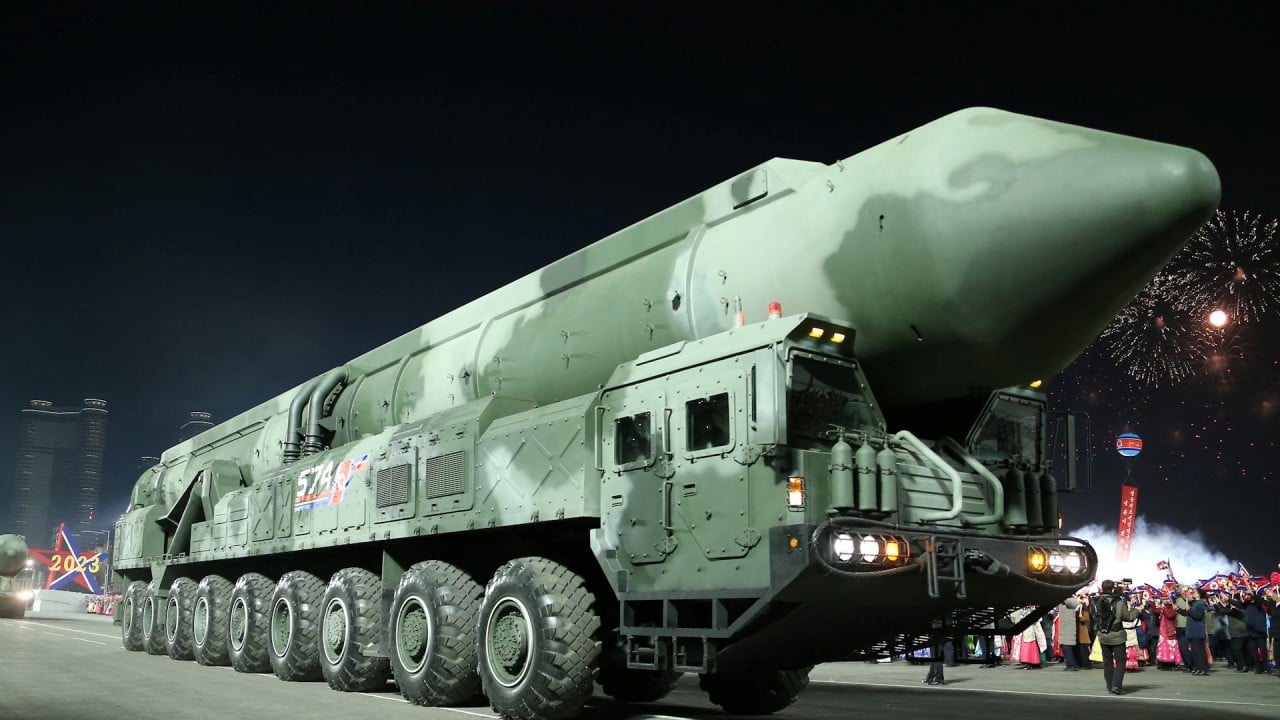
China puts phantom space force concept to the test with aim to swamp enemy missile defences
- Chinese military engineers aim to develop tactic that creates a swarm of fake target signals from space
- Idea has been simulated on a computer and will proceed to tackle engineering challenges, according to study
They revealed the project to the public for the first time this month while announcing they had conducted a proof-of-concept computer simulation.
The modelling results were positive and the project would move to the next stage to tackle engineering challenges, the team said in a paper published in the Chinese-language Journal of Electronics and Information Technology on February 10.
After reaching an altitude above the atmosphere, the missile released three small spacecraft.
Radio interference instruments on the spacecraft picked up enemy radar network signals and sent back phantom signals making the unarmed missile appear to be a much bigger threat than it really was.
Based on those signals, the simulated enemy forces on the ground then launched an interceptor towards the ghost warhead.
“Generating phantom tracks in space is extremely difficult,” the team wrote.
“We solved one of the major challenges … with a clever design,” wrote the team that was led by Zhao Yanli, a senior engineer with the People’s Liberation Army Unit 63891.
PLA missile performance announcement read as warning to US
Faking an attack is an old trick in modern aerial combat that can confuse and exhaust the opponent.
PLA Air Force officials, for instance, are believed to have scrambled fighter jets in the 1980s to meet a swarm of invading bombers detected by a radar station, but found just a lone aircraft equipped with electronic warfare equipment.
If several aircraft are involved in the jamming operation, sending manipulated signals to different radar sites operating in different frequencies at the same time, an entire radar network can be fooled.
Playing the same trick in space was not previously thought feasible, according to Zhao’s team. The jamming aircraft must change course from time to time to ensure the signals received by different radar stations appear to come from the same target.
Employing these manoeuvres in space is a sophisticated and difficult job, and building highly mobile spacecraft would be very expensive, according to Zhao’s team.
“We tried to find another way,” the scientists said in the paper.
Their solution exploits two weak spots in a global missile defence system.
To detect small objects in space, the missile defence radars must be very powerful and housed in large buildings, structures Zhao said were not difficult to find.
Radars are not perfect machines. When merging data from different radar stations, the command centre had to tolerate a margin of error that could result in some fuzziness in tracking signals, the researchers said.
According to their paper, the jamming spacecraft designed by Zhao’s team would be inexpensive because it did not need engines for propulsion. Their flight direction, speed and formation would be set based on intelligence about the enemy’s fixed radar station sites before launch.
After release from the missile, the distance between these jammers would increase over time and affect the accuracy of the phantom target signals.
Chinese scientists build hypersonic generator to power futuristic weapons
The engineers said with careful design they could keep the positioning error between different signal sources to less than half a metre, well within the standard error margin of a military radar, citing the computer simulation results.
The three-spacecraft setting in the simulation was a starting point, according to the researchers who said the technology could easily be scaled up to include many more jamming devices to create a large number of phantom tracks on an enemy’s radar screen.
There is a limit to how many warheads a missile defence system can intercept. Real weapons launched amid or after the phantom strike would therefore encounter much less resistance, according to the study.
A complete missile defence system could also include satellites, warships or even high-altitude balloons.
These mobile platforms can be equipped with other monitoring devices, such as heat sensors and optical telescopes, although it is not clear how jamming spacecraft can dodge or fool these detection methods.
“There are many technical details we do not discuss in this paper,” the team wrote.
A space scientist in Beijing not associated with the phantom force study said such technology could trigger an unwanted nuclear retaliation.
“This phantom space force is never likely to be put to use against a powerful opponent,” said the researcher who asked not to be named because of the sensitivity of the issue.
Drones could play key role in PLA’s ‘final unification war’ on Taiwan
But he said that developing the capability could be deemed necessary for China.
“It will serve as a strategic deterrence,” he added.
China has considerably fewer nuclear weapons than the US and Russia, according to the Chinese government.
A significant amount of Chinese defence resources has been invested to develop new technologies to penetrate missile defence, such as hypersonic missiles that can manoeuvre in the atmosphere at more than five times the speed of sound.



